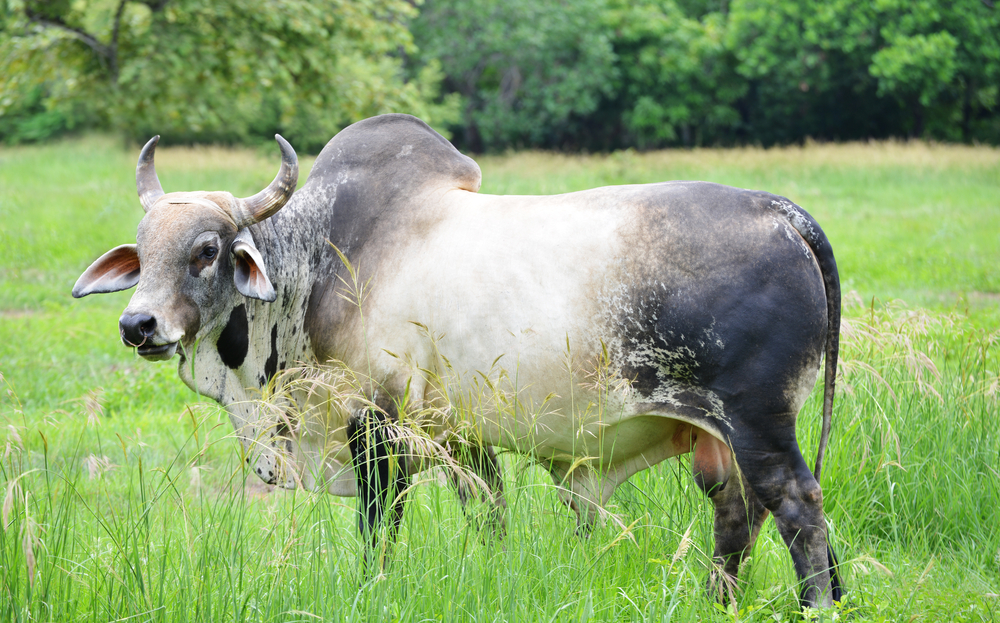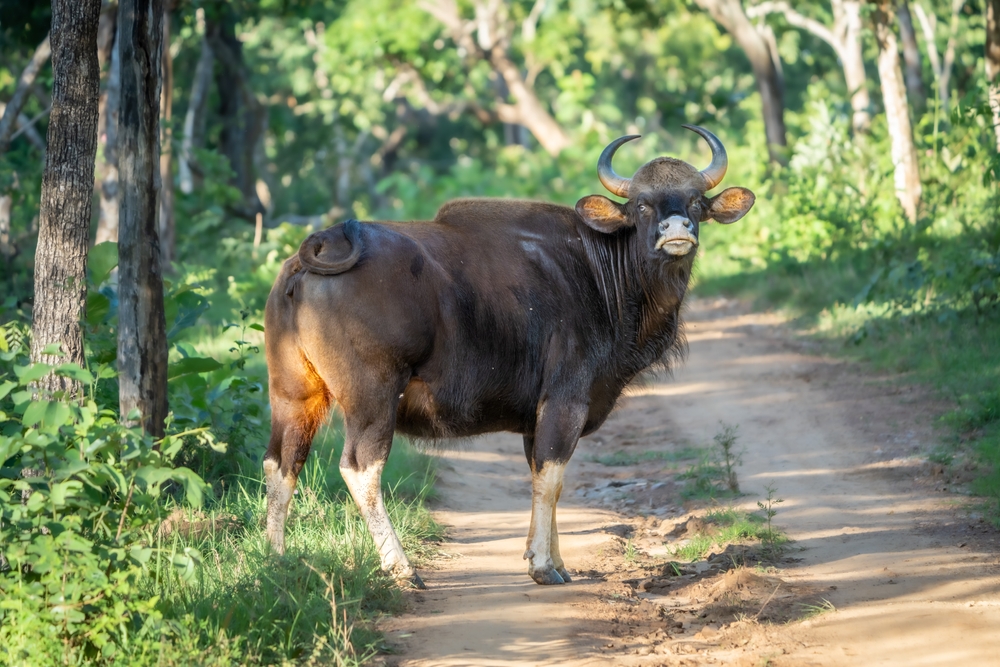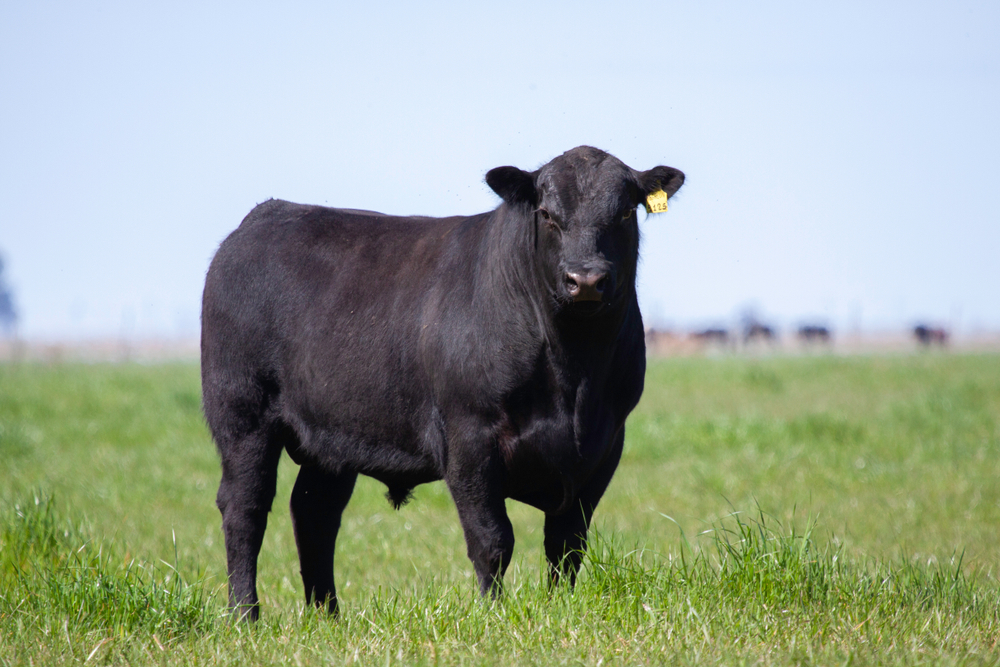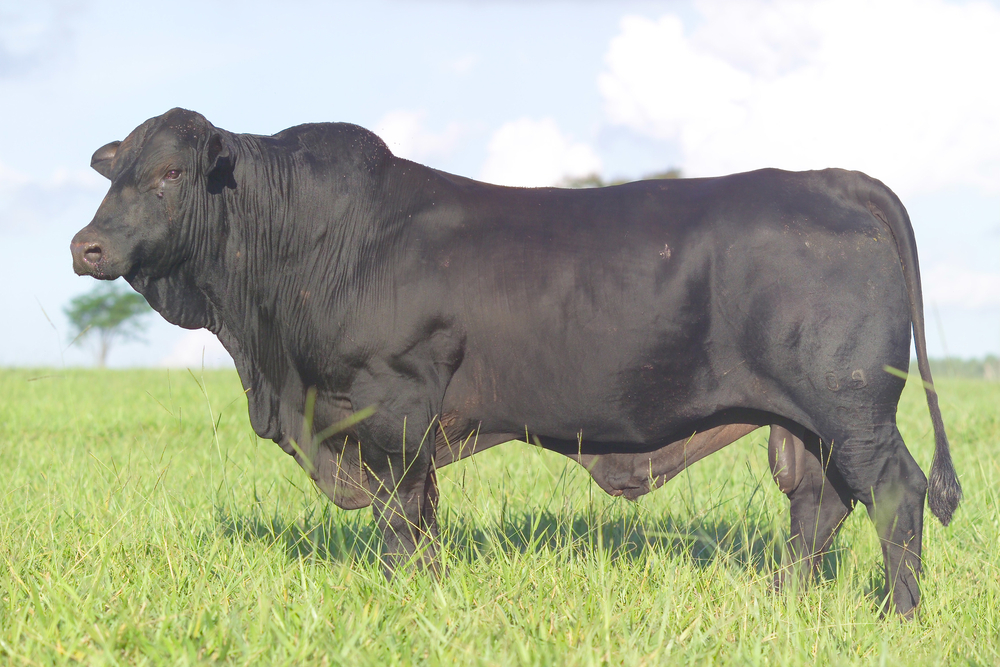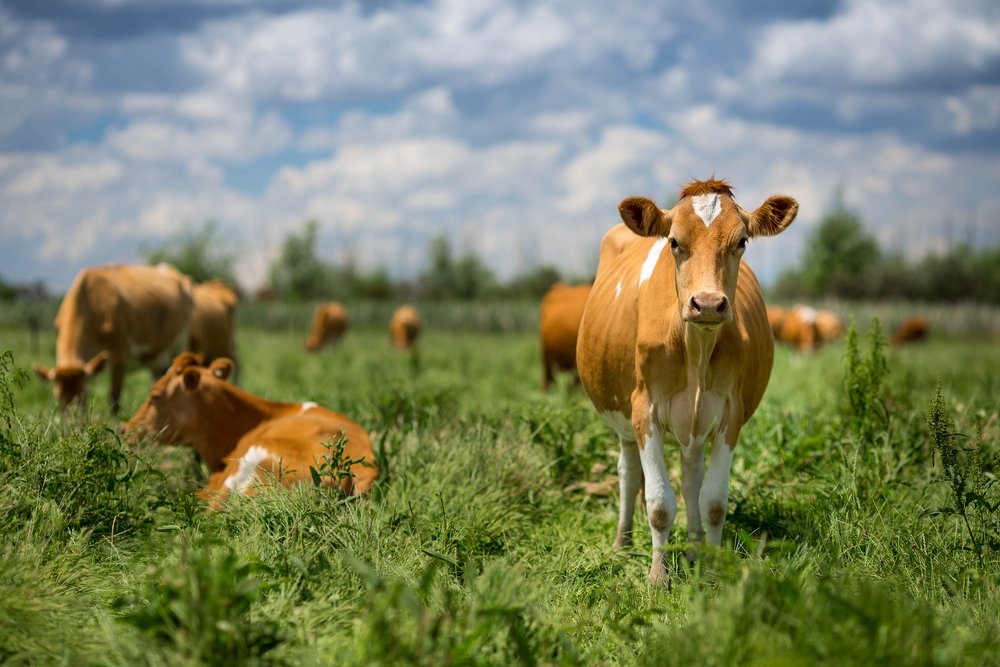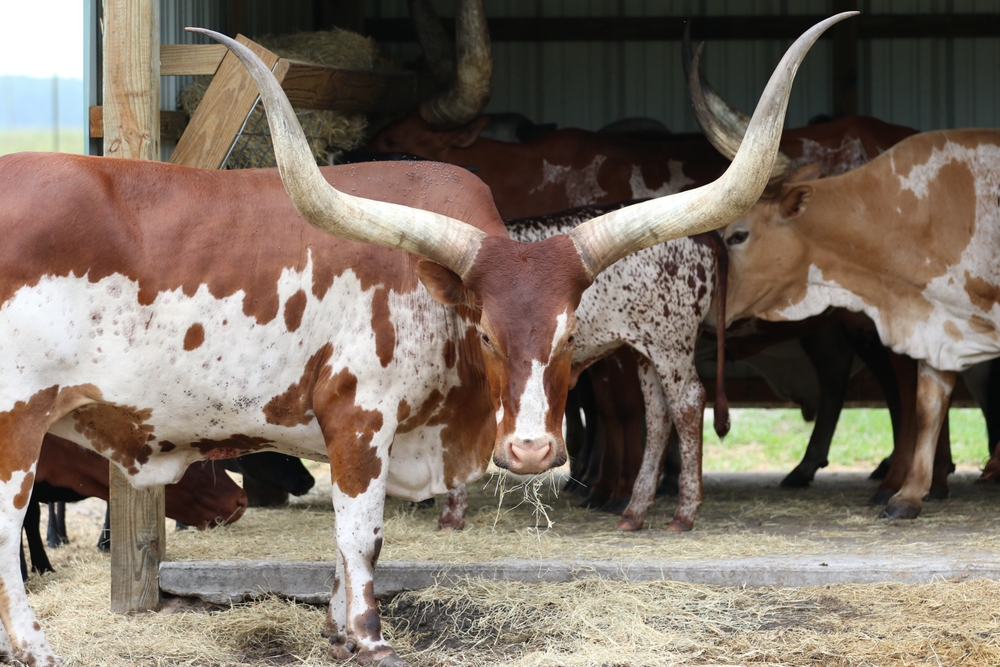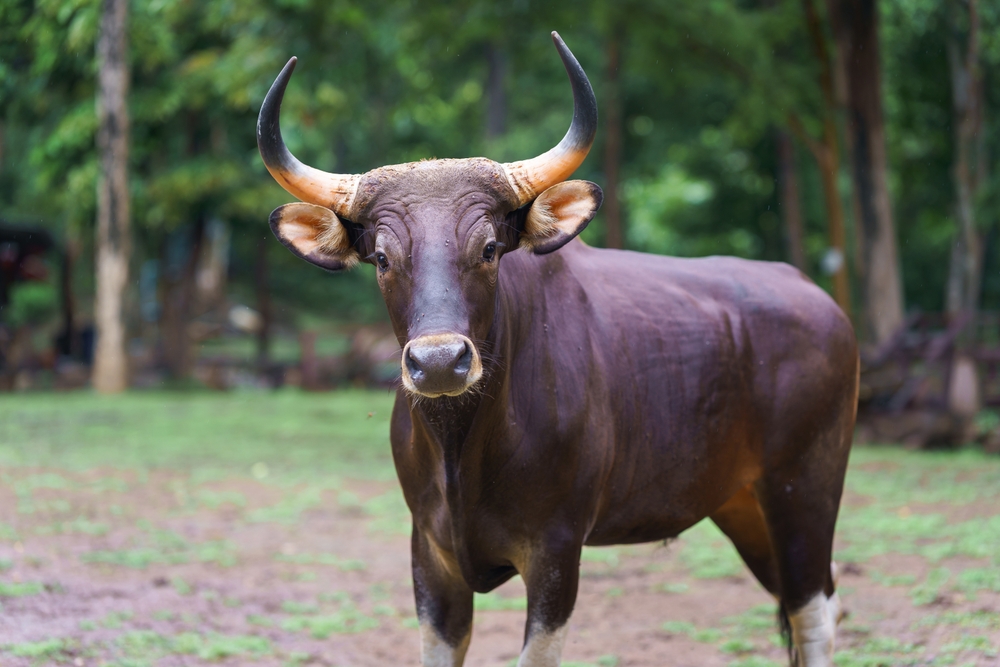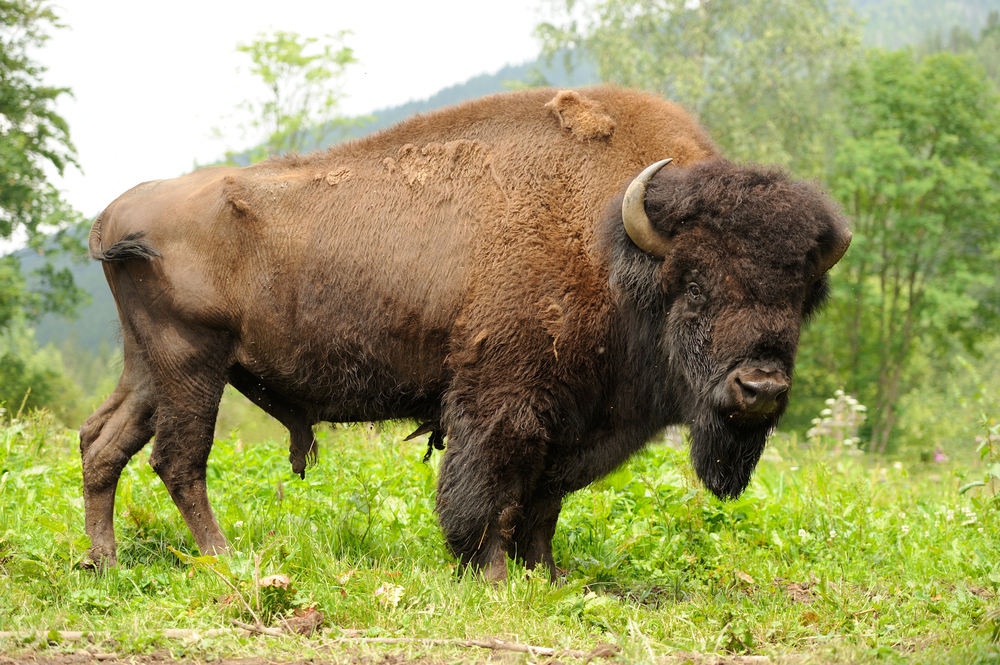The Hereford is a breed of domestic cattle (Bos taurus), closely related to other British beef breeds such as the Shorthornand Angus. These breeds share similar temperate-climate adaptations and beef production traits.
About
The Hereford (Bos taurus) is a globally recognized beef cattle breed known for its hardiness, docile temperament, and distinctive red body with a white face. It belongs to the family Bovidae, which also includes bison, buffalo, antelope, and goats. Originating in Herefordshire, England, in the 18th century, the breed was developed to provide efficient, high-quality beef in a variety of environmental conditions.
Herefords are medium to large in size, with mature bulls weighing 800–1,200 kg (1,800–2,600 lbs) and cows 500–800 kg (1,100–1,800 lbs). Their dense, weather-resistant coats and robust frames enable them to thrive in climates ranging from temperate pastures to arid rangelands. The hallmark red-and-white coloring includes a white face, crest, dewlap, underline, and often lower legs and tail switch.
While traditionally horned, polled (hornless) Herefords were developed in the late 19th century in the United States, making them even more versatile for modern beef production. The breed is prized for its feed efficiency, fertility, and ability to produce tender, well-marbled beef. Their calm nature also makes them easier to manage compared to some other beef breeds.
Herefords adapt exceptionally well to both intensive grazing systems and extensive ranching, performing efficiently on grass and forage. Their longevity is notable, with many cows producing calves well into their teens. In crossbreeding programs, Herefords contribute hardiness, meat quality, and good temperament to offspring.
Today, Hereford cattle are found on six continents, with large populations in North America, South America, Australia, and New Zealand. They remain one of the most influential beef breeds in the world, valued for their combination of productivity, adaptability, and gentle disposition.
Physical Characteristics
Hereford cattle are a popular beef breed recognized for their hardiness, distinctive coloring, and strong build:
-
Coat: Short, smooth hair that is reddish-brown with a white face, crest, underline, switch, and lower legs. The red shade can vary from deep mahogany to lighter rust.
-
Head: Broad forehead with a straight profile; naturally horned with thick, curved horns in traditional lines, though polled Herefords (naturally hornless) are also common.
-
Body: Deep, muscular frame with a wide chest, well-sprung ribs, and strong hindquarters—built for efficient beef production.
-
Skin: Loose and pliable, aiding in heat dissipation, though Herefords are more cold- and temperate-adapted than heat-specialized breeds.
-
Tail: Medium length with a white switch at the end.
Size:
-
Length (Body): Approximately 7.5 to 8.5 ft (2.3 to 2.6 m) from head to rump.
-
Shoulder Height: Around 4.5 to 5 ft (1.37 to 1.52 m).
Weight:
-
Adult Female (Cow): Typically 1,200 to 1,500 lbs (545 to 680 kg).
-
Adult Male (Bull): Usually 1,800 to 2,500 lbs (820 to 1,135 kg).
Herefords are known for their hardiness, docile nature, and excellent forage efficiency, making them one of the most widespread and adaptable beef breeds in the world.
Reproduction
Hereford cattle are known for strong fertility, calving ease, and dependable breeding performance:
-
Mating and Breeding Season:
-
Naturally fertile and can breed year-round, though many operations follow seasonal breeding to align calving with optimal pasture availability.
-
Both natural service and artificial insemination (AI) are common in herd management.
-
-
Gestation:
-
The gestation period averages 285 days (about 9.5 months).
-
-
Birth and Calving:
-
Typically give birth to a single calf; twins are rare.
-
Calving ease is a hallmark of the breed, thanks to moderate calf birth weights and the cow’s pelvic structure.
-
-
Calf Characteristics at Birth:
-
Newborn calves usually weigh 60 to 90 lbs (27 to 41 kg).
-
Calves are vigorous and able to stand and nurse within hours after birth.
-
-
Maternal Care:
-
Cows are attentive mothers with good milk production to support calf growth.
-
Calves are usually weaned at 6 to 8 months of age.
-
-
Maturity and Breeding Readiness:
-
Heifers typically reach breeding age at 15 to 18 months, aiming for first calving at around 2 years.
-
Bulls generally begin breeding successfully at 18 months to 2 years, with peak fertility between 3 and 6 years.
-
Herefords’ combination of fertility, calving ease, and strong calf survival rates makes them a favorite for both purebred and crossbreeding beef programs.
Lifespan
Lifespan
-
In Commercial Beef Operations:
Hereford cattle typically live 12 to 15 years, though many are retired from breeding earlier for economic reasons. -
In Low-Stress or Pasture-Based Systems:
With good forage, moderate workloads, and attentive care, Herefords can live 15 to 18 years, remaining productive for much of that time. -
In Ideal or Sanctuary Conditions:
Without production pressures, some Herefords have been known to reach 20 years or more, though this is uncommon in commercial settings.
Threats to Longevity:
-
Reproductive Wear: Frequent breeding cycles can shorten a cow’s productive lifespan.
-
Nutrition & Forage Quality: Extended drought, overgrazing, or nutrient-deficient pastures can lead to weight loss and reduced health.
-
Disease & Parasites: While hardy, they are still susceptible to conditions like pinkeye, foot rot, and internal parasites.
-
Environmental Stress: Well adapted to cold and temperate climates, but prolonged extreme heat without shade or water can reduce health and productivity.
Herefords are valued for their durability, adaptability, and long productive lives, often outperforming less hardy beef breeds in challenging grazing environments.
Eating Habits
Hereford cattle are efficient grazers, well-suited to converting a wide range of forage types into quality beef:
-
Primary Diet:
-
Prefer pasture grasses such as fescue, ryegrass, orchardgrass, and timothy.
-
Will graze legumes like clover and alfalfa when available.
-
Can utilize native range grasses and low-quality forage better than many intensive beef breeds.
-
-
Supplemental Feeding:
-
In managed systems, may receive hay, silage, and grain rations (corn, barley, oats) to improve growth rates or finish cattle for market.
-
Mineral supplements are often provided to maintain herd health, especially in regions with soil nutrient deficiencies.
-
-
Water Needs:
-
Require consistent access to clean water; adult cattle may consume 10 to 20 gallons (38 to 76 liters) per day, depending on weather and diet.
-
-
Feeding Behavior:
-
Graze for several hours in the morning and late afternoon, ruminating during hotter midday hours.
-
Known for forage efficiency, maintaining condition on pastures where more demanding breeds may lose weight.
-
Herefords’ ability to thrive on a variety of forage types and maintain good body condition with moderate feed inputs has made them one of the most economical beef breeds worldwide.
Uniqueness
The Hereford (Bos taurus) is one of the most recognizable and influential beef cattle breeds in the world, with several defining traits:
-
Distinctive Appearance: The trademark red body with a white face is instantly recognizable and has influenced the coloration of many crossbreeds.
-
Global Adaptability: Originating in Herefordshire, England, Herefords now thrive on every inhabited continent, adapting to climates from cold, wet highlands to semi-arid plains.
-
Forage Efficiency: Known for converting low- to medium-quality pasture into beef more efficiently than many other breeds.
-
Docile Temperament: Calm, easy-to-handle cattle that reduce stress in the herd and make management easier.
-
Crossbreeding Value: Frequently used in crossbreeding to add hardiness, feed efficiency, and docility to other beef lines.
-
Longevity: Productive well into their mid- to late teens, often outlasting higher-maintenance beef breeds.
-
Economic Impact: One of the first beef breeds exported globally, helping establish commercial beef industries in North America, South America, Australia, and Africa.
The Hereford’s combination of temperament, adaptability, and economic importance has cemented its place as a cornerstone breed in global beef production.
Be the First to Share Photos of This Species.
FAQ’s
1. What is the closest species to the Hereford?
2. How does the Hereford compare to other cattle breeds?
Herefords excel in forage efficiency, hardiness, and docility, making them ideal for extensive grazing systems. Compared to Angus, they are often more heat- and cold-tolerant but may have slightly less marbling in the meat. They generally outperform high-maintenance beef breeds in low-input pasture systems and have longer productive lifespans than many commercial beef breeds.
3. What national parks provide the best chances to see a Hereford?
As domesticated cattle, Herefords are not found wild, but they can often be seen in ranchlands near protected areas, including:
-
Badlands National Park region (South Dakota, USA) – surrounding ranches often keep Herefords.
-
Grasslands National Park buffer zones (Saskatchewan, Canada) – pasturelands with traditional British cattle breeds.
-
Snowdonia National Park area (Wales, UK) – nearby farms maintain heritage Hereford herds.




































































